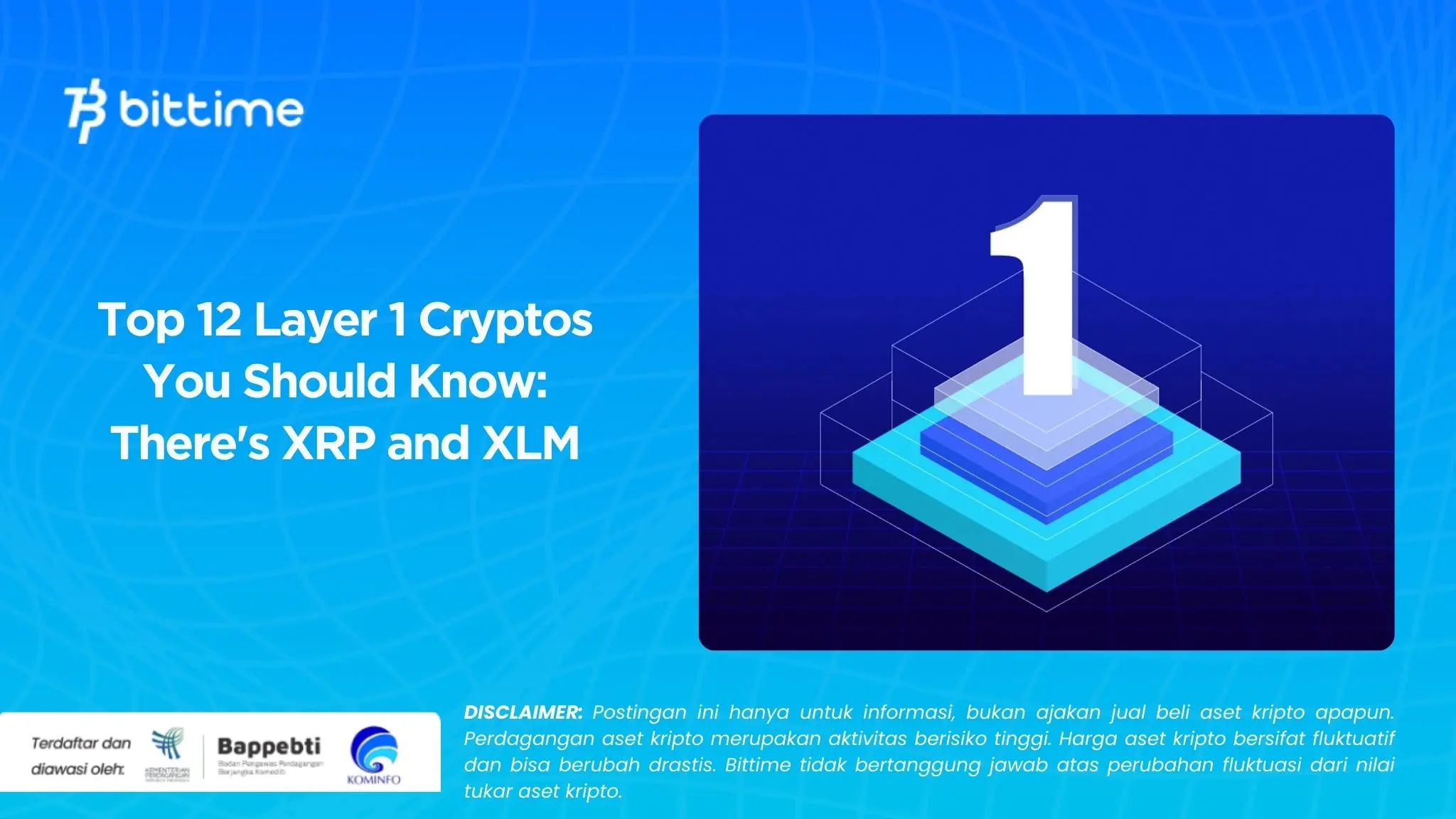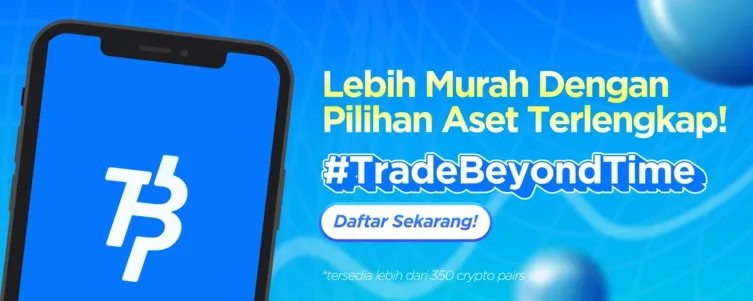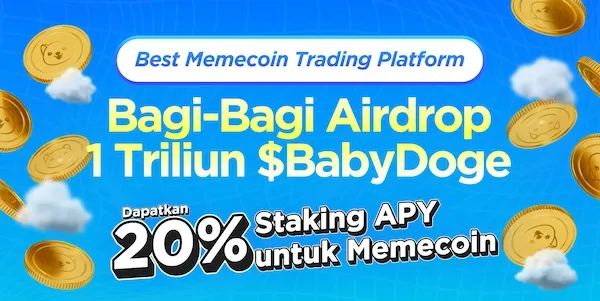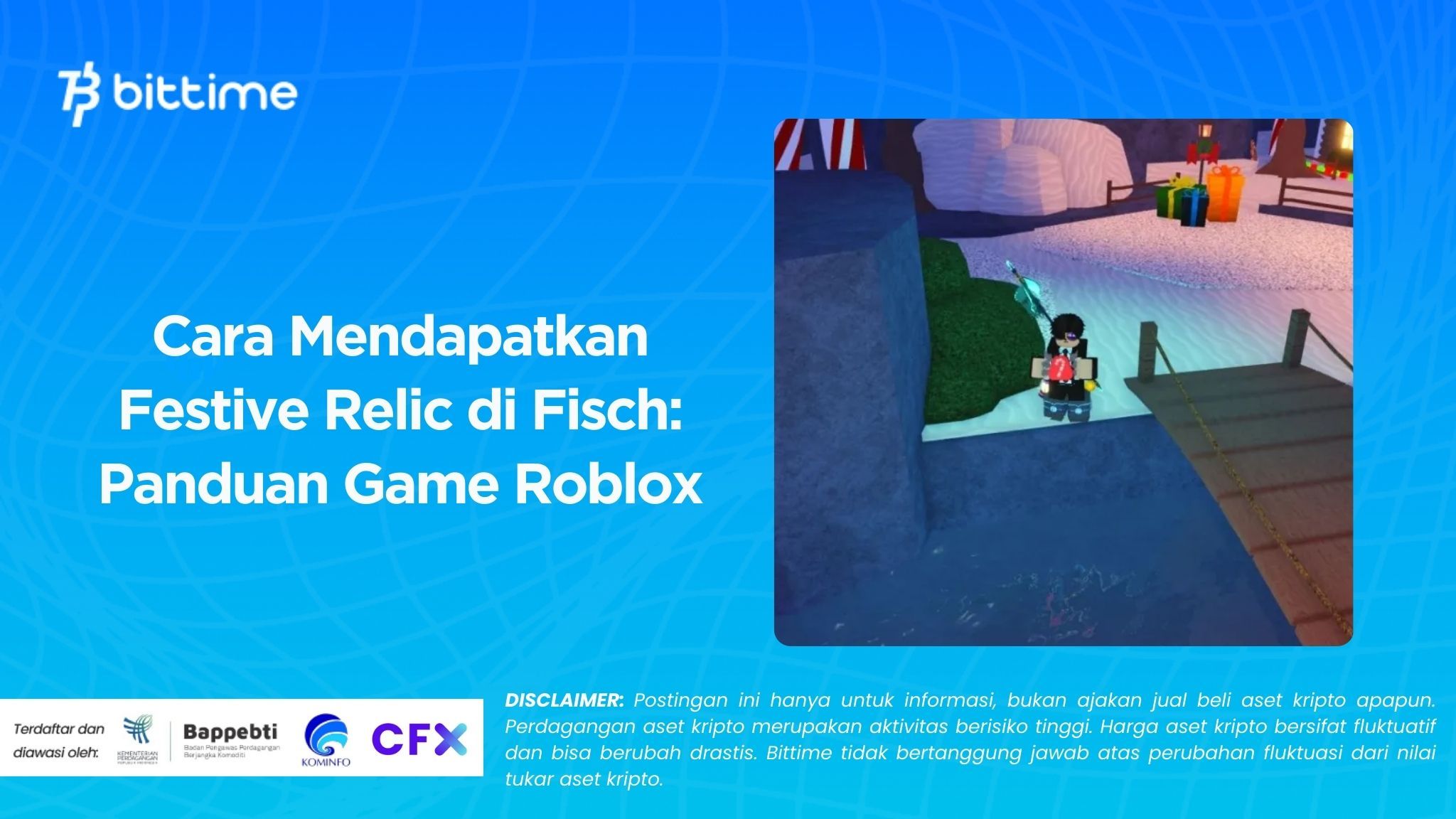Top 12 Layer 1 Cryptos You Should Know: There's XRP and XLM
2024-11-19
Bittime - Cryptocurrencies have experienced rapid development in recent years. One of the most fundamental components in the crypto world is blockchain Layer 1. So, this article will discuss the top 12 layer 1 cryptocurrencies, including XRP and XLM.
This blockchain is the basis of the entire crypto ecosystem and is the foundation for various applications and tokens that operate on it. In this article, we will discuss 12 Layer 1 crypto projects top ones worth knowing about, including XRP and XLM, and how they are shaping the future of the industry.
With more and more people interested in investing in the world of crypto, understanding the various existing projects and platforms is key.
One of the best options is to study crypto projects Layer 1. These projects provide the basic infrastructure needed for secure and decentralized transactions.
From the iconic Bitcoin to new innovations like Sei, here are the top 12 Layer 1 cryptos that will dominate in 2024.
List of 12 Best Layer 1 Cryptos
1. Bitcoin (BTC)
Bitcoin is a pioneer of the crypto world that remains Layer 1 project best. As the first cryptocurrency introduced in 2009, Bitcoin has become not only a crypto symbol, but also the largest decentralized payment system.
With a limited supply of only 21 million tokens, Bitcoin is considered a secure store of value. The next halving moment which is expected to occur in April 2024 could trigger a significant price spike.
2. Ethereum (ETH)
Ethereum leads as blockchain Layer 1 which is most widely used by decentralized application (dApp) developers. With a vast market, Ethereum supports various DeFi (Decentralized Finance) projects, metaverse games, and even NFTs (Non-Fungible Tokens).
As a network that enables smart contracts, Ethereum plays an important role in the development of the modern blockchain ecosystem.
3. Solana (SOL)
Solana is known for its excellent speed and efficiency. With the ability to process over 65,000 transactions per second, Solana offers a cheaper and faster solution compared to Ethereum.
This makes it an attractive option for developers who need scalability without sacrificing security.
4. BNB (BNB)
As part of the Binance ecosystem, BNB is blockchain Layer 1 which is designed to support transactions in the Binance Chain. Apart from paying transaction fees, BNB is also used for various applications running on the Binance network.
As a deflationary token, BNB continues to have its supply reduced through regular token burning.
5. Ripple (XRP)
XRP is blockchain Layer 1 which focuses on cross-border transactions. Known for its incredibly fast transaction speeds—with extremely low fees—XRP has partnered with major banks around the world to facilitate international transactions without using SWIFT.
This gives XRP great potential as a future global payment system.
6. Cosmos (ATOM)
Cosmos focuses on interconnectivity between different blockchains. This project creates a protocol that allows different blockchains to communicate with each other without using a centralized provider.
With ATOM as its main token, Cosmos supports interoperability between its networks.
Read also: These are the 5 Best Meme Coins on the SUI Network!
7. Avalanche (AVAX)
Avalanche is promising unlimited scale in terms of the number of transactions that can be processed without reducing the level of security. With near-instant transactions, Avalanche enables ERC-20 projects to integrate with the network, providing greater possibilities for innovation in the world of DeFi.
8. Cronos (CRO)
Cronos is the blockchain that powers the Crypto.com platform. With low transaction fees and the ability to run smart contracts, Cronos aims to expand its reach in supporting more decentralized applications, while providing access to the hugely popular Crypto.com platform.
9. Stellar (XLM)
Stellar is blockchain Layer 1 which is very efficient in handling cross-border transactions at low costs. Focused on international payments and financial inclusion, Stellar has collaborated with IBM and MoneyGram to increase its adoption in the financial sector.
10. Polkadot (DOT)
Polkadot aims to be blockchain that connects other blockchains. With its efficient protocol, Polkadot offers interoperability between blockchains for easy decentralized transfer of assets and data.
The DOT token plays an important role in terms of governance and participation in network development.
11. Kaspa (KAS)
Kaspa is blockchain Layer 1 which uses a proof-of-work mechanism. However, this blockchain offers incredibly fast transaction speeds—in just seconds.
Being one of the fastest growing cryptocurrencies, Kaspa can offer high scalability for applications that require very fast confirmation times.
12. Sei (SEI)
Despite only launching in 2023, Sei has already seen incredible growth, with the token price increasing over 3,400% since launch. Sei is capable of handling up to 20,000 transactions per second with transaction finality in just 380 milliseconds, making it one of the promising Layer 1 projects in 2024.
Read also: Will MicroStrategy Stop Buying Bitcoin Someday?
Understanding Layer 1 Crypto Basics
Simply, crypto Layer 1 are blockchains that operate with their own network and consensus mechanisms. They are the foundation of the entire crypto ecosystem, organizing and processing transactions and data.
Bitcoin and Ethereum are the most famous examples of blockchain Layer 1 This. The main advantage of Layer 1 blockchain is its decentralization and guaranteed security without depending on other networks.
Difference between Blockchain Layer 1 and Layer 2
The basic difference between Layer 1 and Layer 2 lies in its function. Layer 1 is the core network underlying the crypto ecosystem, handling everything from consensus to transaction processing.
On the other hand, Layer 2 is an additional solution that builds on Layer 1 to increase scalability, reduce transaction costs, and speed up transaction processing. For example, Polygon is a Layer 2 solution for Ethereum, which speeds up transactions with lower fees.
Read also: Reasons Why Crypto XLM Prices Are Rising, Here's the Analysis!
Conclusion
Understand crypto Layer 1 is an important first step for anyone who wants to dive deeper into the world of cryptocurrency. With Layer 1 project like Bitcoin, Ethereum, and Solana, the world of blockchain is growing rapidly, presenting a variety of investment and innovation opportunities.
As technology advances, these projects have the potential to play a major role in the future of the global digital economy. For investors, 2024 could be a promising year with many opportunities across emerging Layer 1 blockchains.
How to Buy Crypto on Bittime

Want to trade sell buy Bitcoins and crypto investment easily? Bittime is here to help! As an Indonesian crypto exchange officially registered with Bappebti, Bittime ensures every transaction is safe and fast.
Start with registration and identity verification, then make a minimum deposit of IDR 10,000. After that, you can immediately buy your favorite digital assets!
Check the exchange rate BTC to IDR, ETH to IDR, SOL to IDR and other crypto assets to find out today's crypto market trends in real-time on Bittime.
Disclaimer: The views expressed belong exclusively to the author and do not reflect the views of this platform. This platform and its affiliates disclaim any responsibility for the accuracy or suitability of the information provided. It is for informational purposes only and not intended as financial or investment advice.




